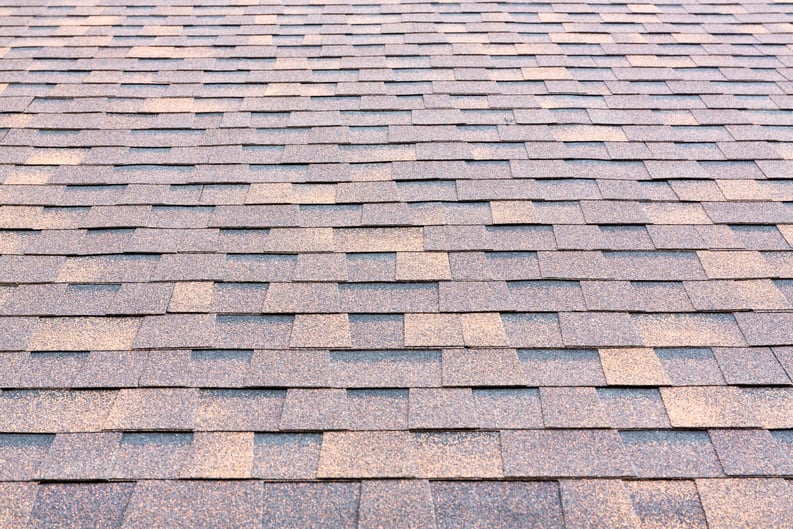 When it comes to many things around the house, out of sight is indeed out of mind. Homeowners tend to put off routine maintenance. Until there is a problem that requires their immediate attention, that is.
When it comes to many things around the house, out of sight is indeed out of mind. Homeowners tend to put off routine maintenance. Until there is a problem that requires their immediate attention, that is.
The roof is not exempt from this, but a problem with your roofing can cause huge issues for the rest of your house.
Many people are turning away from traditional roofing options and opting to protect their homes with rubber roofing.
If you aren’t familiar with this roofing option, you probably have lots of questions. What are the benefits of this type of roofing over other alternative materials? Keep reading to find out why you should be using rubber roofing on your home.
What is Rubber Roofing?
Roofing shingles are traditionally made from slate, wood, paper treated with bitumen, or ceramic tiles. However, rubber based roofing materials have been growing in popularity for years. This is thanks to the many benefits they offer over these types of shingles.
Rubber roofing, which is also called EPDM (ethylene propylene diene terpolymer) by roofing professionals, is available in two different forms: shingles or rolls.
Rubber shingles are installed the same way traditional shingles are — by nailing the shingles to the roof so that they overlap.
Rolls of rubber based roofing are a more cost efficient option and are much faster to install. You simply need to measure and cut the roll to the proper size. Leave space for any chimneys and then apply the adhesive and roll out the roofing material.
Since rolls can be applied with very few seams, there is much less of a risk of developing leaks when using this type of roofing.
Both options are made from eco-friendly materials such as recycled tires and sawdust. These materials are shaped and pressed into shingles or flattened into large rolls. They are a favorite with the environmentally conscious homeowner because they are recyclable.
And thanks to the longevity of these materials, it is unlikely that the roofing will crack, leak, or exhibit other problems that are common with traditional roofing materials.
One of the most obvious drawbacks to this type of roofing is the upfront cost. However, most homeowners agree that this balances out with the many benefits.
Typically roofing materials are measured by “the square,” which comes out to be 100 square feet. Asphalt roofing usually comes in around $100 a square. Rubber alternatives can be closer to $300.
Now that we know what rubber roofing is we can take a closer look at why it makes a great alternative to traditional roofing options.
Longer life expectancy
Asphalt shingles are typically expected to last anywhere from 15 to 20 years. Rubber shingle and roll roofing options, on the other hand, can last up to 30 or even 50 years.
This is in part because of the materials the roofing is made with and in part because of how it is installed.
Rubber is much more flexible than the material other kinds of shingles are made from. This means that it can fit better to the shape of the roof and protects the roof better.
Less maintenance
This goes hand in hand with the longer life expectancy of rubber roofing. Many of the issues that are seen with traditional roofing materials, such as cracking or leaking, do not happen with rubber based roofing.
Ceramic tiles often break. Asphalt shingles can become brittle and crack.
Rubber roofing is more resistant than these other materials. This means you will spend less time and money making repairs to your roof over the course of its lifetime.
In the rare case that a leak does develop, repairs are fast and inexpensive. They are also easy to pinpoint since most often a leak is the result of a seam pulling apart rather than a crack developing.
Usually, all that is needed to repair a leak is a tube of liquid rubber to be applied over the offending area. There is also a special type of highly durable tape that can be applied in some cases.
More protection from the elements
Your roof protects your house from the elements. It is important to keep in mind that there are a lot of different things that can damage your roof on a daily basis. From debris to weather, these are the things you should take into consideration when thinking about the durability of different roofing material options.
While rubber roofing is a cost effective and practical choice for any home, it becomes an even better option if the house has a flat or low-pitch roof. Traditional asphalt shingles can often leak if the roof isn’t at a steep enough angle to allow the rain water the flow off the roof.
This means that rainwater sits on the roof and can actually seep between the shingles causing water damage to the structure of the roof.
Rubber shingles or roofing, however, creates a much better seal, so leaking is not a concern. Rubber shingles create less resistance, so water is able to flow off with less of an angle.
Rubber roofing is also better able to withstand harsh weather and is less likely to crack from storms or prolonged exposure to the hot summer sun.
But weather isn’t the only thing your house will be protected from with this type of roofing.
Rubber based roofing is a cheaper alternative than slate shingles. It is also just as fire resistant and is a popular choice for family homes thanks to this added safety measure. Not only is rubber resistant to risks like lightning strikes, but it may also prevent a fire from spreading long enough for help to arrive.
Rubber shingles are also much more resistant to pests than other forms of shingles.
With all the benefits of rubber roofing, it is easy to understand why more and more homeowners are turning away from traditional roofing options and opting for this investment. The best time to address these concerns is before they become a real problem.
So if you’re ready to take the first steps toward roofing your house with rubber options, feel free to get in touch!

